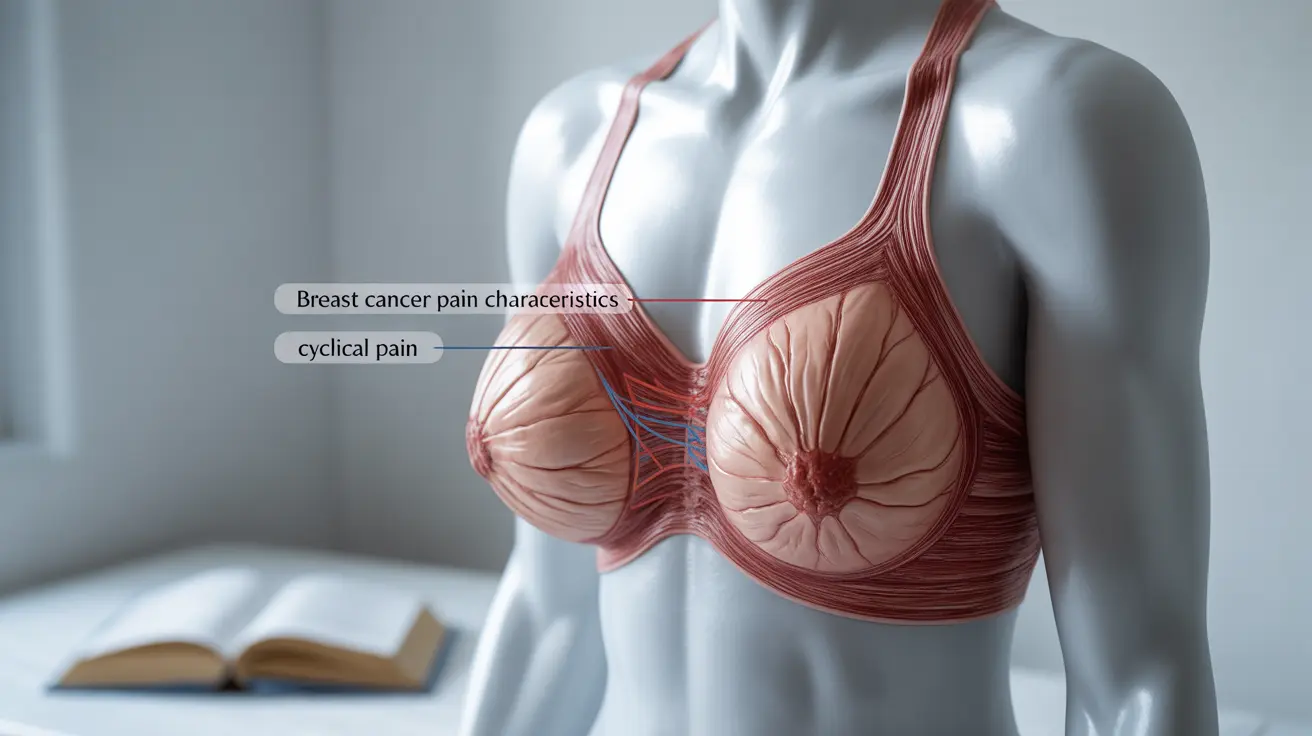Many people worry about breast pain and its potential connection to breast cancer. Understanding the nature of breast cancer-related pain versus other types of breast discomfort is crucial for recognizing when to seek medical attention. This comprehensive guide will help you understand the characteristics of breast cancer pain and how to distinguish it from other common breast conditions.
Types of Breast Pain and Their Patterns
Breast pain can manifest in different ways, and not all breast pain indicates cancer. Understanding these patterns can help ease anxiety and guide appropriate medical care decisions.
Cyclical vs. Non-Cyclical Breast Pain
Cyclical breast pain typically follows hormonal patterns and menstrual cycles. This type of pain usually affects both breasts, comes and goes predictably, and is often accompanied by swelling. Non-cyclical breast pain, however, may be more constant and typically affects a specific area of the breast.
Breast Cancer Pain Characteristics
Breast cancer pain patterns can vary significantly depending on the type of cancer and its stage. Unlike typical breast pain, cancer-related discomfort often has distinct characteristics:
- Persistent or worsening pain in one specific area
- Pain that doesn't correlate with menstrual cycles
- Discomfort accompanied by other symptoms like skin changes or lumps
- Pain that doesn't resolve on its own over time
Signs That Warrant Immediate Medical Attention
While not all breast pain indicates cancer, certain symptoms should prompt immediate medical evaluation:
- Sudden, severe breast pain
- Pain accompanied by redness, swelling, or skin changes
- Persistent pain in one specific area
- Any new lump or thickening with pain
- Changes in breast shape or size
Understanding Inflammatory Breast Cancer
Inflammatory breast cancer (IBC) presents differently from other forms of breast cancer. Its symptoms can be particularly confusing because they may come and go initially before becoming more persistent. Key characteristics include:
- Rapid breast swelling
- Skin redness or discoloration
- Breast warmth
- Orange peel-like skin texture
- Breast tenderness or pain
Frequently Asked Questions
Does breast cancer pain typically come and go, or is it constant?
Breast cancer pain typically tends to be more persistent rather than intermittent. While the intensity might fluctuate, the pain usually stays in one specific area and doesn't completely resolve without treatment. However, early-stage symptoms of inflammatory breast cancer may initially come and go before becoming more constant.
How do I distinguish between breast cancer pain and other common causes of breast pain?
Breast cancer pain is typically localized to one specific area and often accompanied by other symptoms like skin changes or lumps. Common breast pain, particularly hormonal pain, usually affects both breasts, changes with menstrual cycles, and improves on its own. The presence of additional symptoms like skin changes, nipple discharge, or lumps suggests the need for medical evaluation.
What are the symptoms of inflammatory breast cancer, and how does it differ from other breast conditions?
Inflammatory breast cancer typically causes rapid breast changes including swelling, redness, warmth, and skin dimpling (orange peel texture). Unlike common breast conditions, IBC symptoms develop quickly, usually within weeks, and don't respond to regular treatments for breast infections or inflammation.
When should I seek medical attention if I experience persistent breast pain?
Seek immediate medical attention if you experience breast pain that persists beyond your menstrual cycle, is accompanied by visible breast changes, occurs in one specific area, or is associated with lumps or skin changes. Any new or unusual breast symptoms that don't resolve within two weeks should be evaluated by a healthcare provider.
Can hormonal fluctuations cause breast pain that mimics symptoms of breast cancer?
Yes, hormonal fluctuations can cause breast pain that might initially seem concerning. Hormonal breast pain typically affects both breasts, changes with menstrual cycles, and improves with time. However, if you're unsure about the cause of your breast pain or if it's accompanied by other symptoms, it's best to consult with a healthcare provider for proper evaluation.




